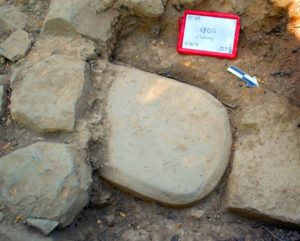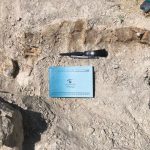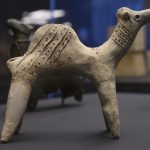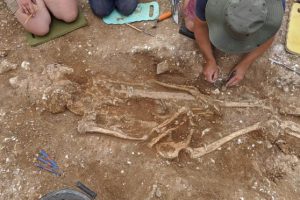
The artifact in question is a sandstone slab (stele) dating from about 500 BC. It was uncovered from an Etruscan temple at the Poggio Colla site in northern Etruria, Italy.
The stele has a mass of about 227 kg and is roughly 4 feet (1.2 m) tall by more than 2 feet (60 cm) wide.
“The slab was discovered embedded in the foundations of a monumental temple where it had been buried for more than 2,500 years. At one time it would have been displayed as an imposing and monumental symbol of authority,” said Prof. Gregory Warden, co-director and principal investigator of the Mugello Valley Archaeological Project and an archaeologist at Southern Methodist University, Dallas.
“The Mugello Valley dig, specifically the Poggio Colla site, is northeast of Florence, Italy. The slab would have been connected to the early sacred life of the sanctuary there.”

“The architecture then was characterized by timber-framed oval structures pre-dating a large temple with an imposing stone podium and large stone column bases of the Tuscan Doric type, five of which have been found at the site.”
According to Prof. Warden, the Etruscan stele has at least 70 legible letters and punctuation marks.
“This is probably going to be a sacred text, and will be remarkable for telling us about the early belief system of a lost culture that is fundamental to western traditions,” he said.
“Inscriptions of more than a few words, on permanent materials, are rare for the Etruscans, who tended to use perishable media like linen cloth books or wax tablets,” added Dr. Jean Turfa, Etruscan scholar at the University of Pennsylvania Museum.
“This stone stele is evidence of a permanent religious cult with monumental dedications, at least as early as the Late Archaic Period, from about 525 to 480 BC.”
“Its re-use in the foundations of a slightly later sanctuary structure points to deep changes in the town and its social structure.”















